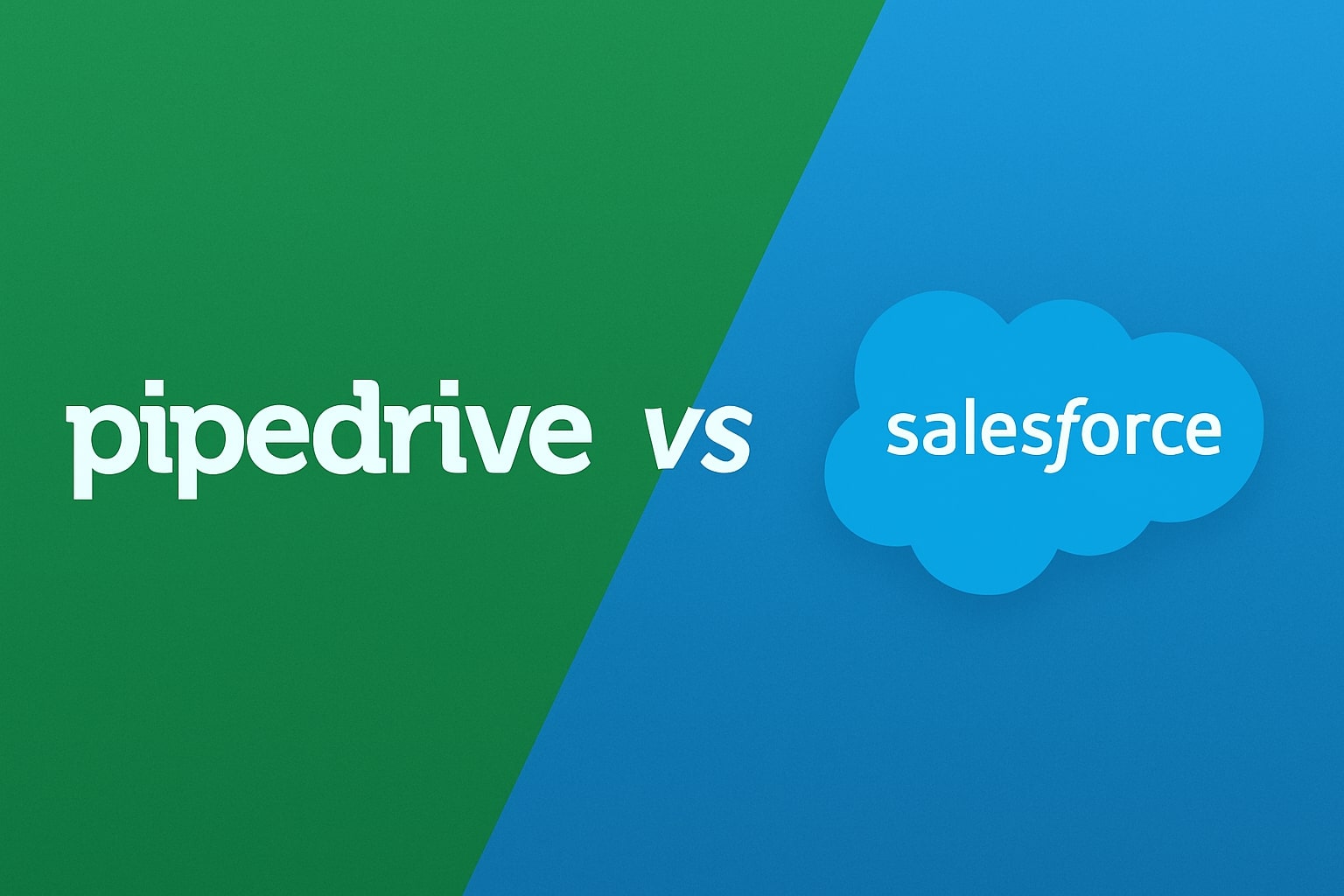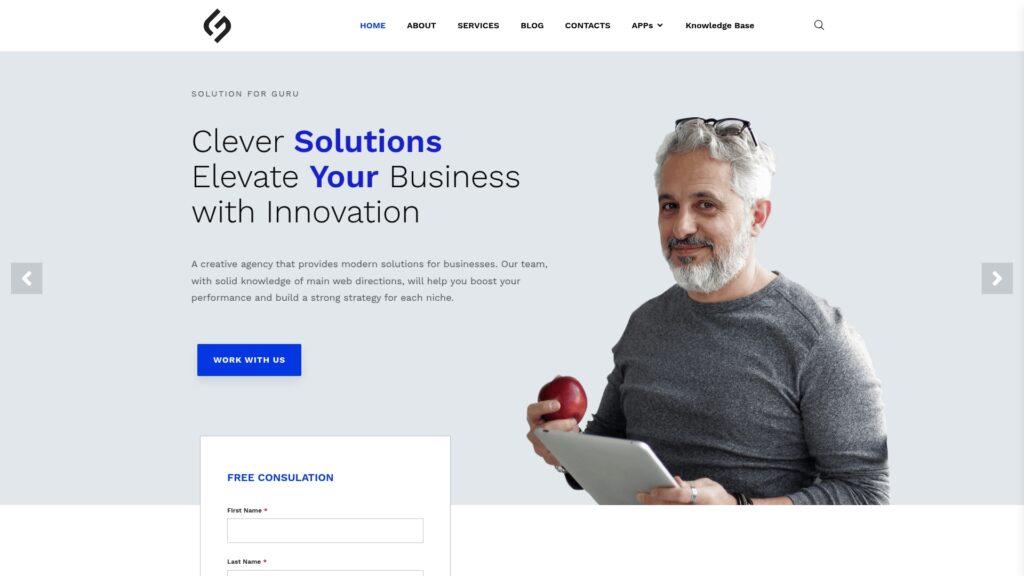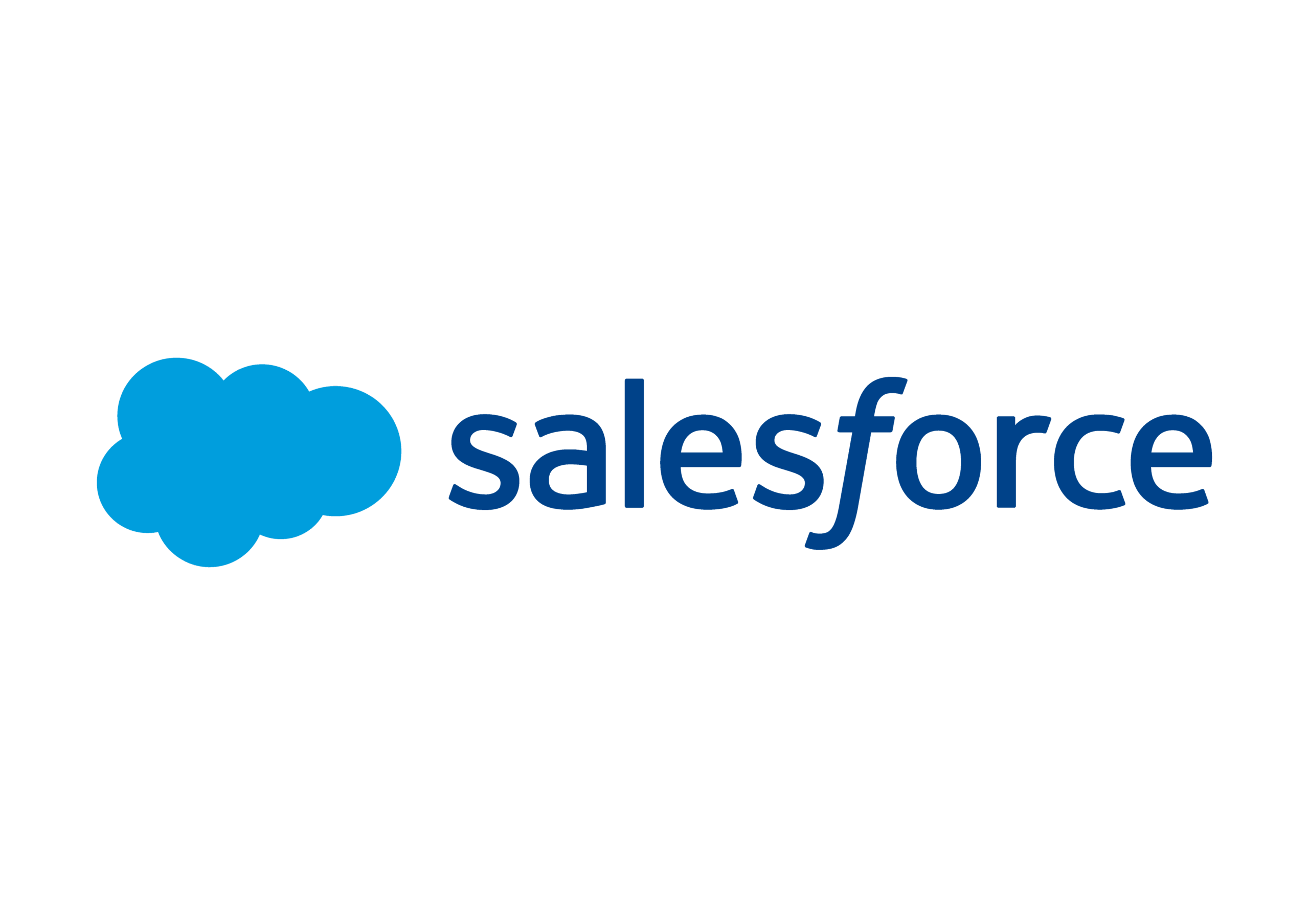Which CRM is Right for Your Business: Pipedrive vs Salesforce?

Choosing the right Customer Relationship Management (CRM) system can significantly impact your business’s sales performance, operational efficiency, and overall growth trajectory. In today’s competitive landscape, two platforms frequently emerge as top contenders: Pipedrive and Salesforce. While both solutions aim to streamline customer relationships and boost sales productivity, they cater to distinctly different business needs and organizational structures.
This comprehensive comparison will guide you through every essential aspect of these two powerful CRM platforms, helping you make an informed decision that aligns with your business objectives, budget constraints, and technical requirements.
Table of Contents
- Quick Summary: Pipedrive vs Salesforce at a Glance
- What Are Pipedrive and Salesforce?
- How Do Pipedrive and Salesforce Compare in Functionality?
- Which Platform Offers Better Scalability for Growing Businesses?
- How Well Do These CRMs Integrate with Other Services?
- Which CRM is Easier to Use and Offers Better Support?
- How Do Security Features Compare Between These Platforms?
- What Are the Cost Differences Between Pipedrive and Salesforce?
- What Are the Key Features That Define Each Platform?
- What Are the Main Advantages and Disadvantages?
- Comprehensive Comparison Table
- Conclusions: Which CRM Should You Choose?
- Frequently Asked Questions
- Why Partner with Solution4Guru for Your CRM Implementation?
Quick Summary: Pipedrive vs Salesforce at a Glance
Before diving into the detailed comparison, let’s establish a quick overview of what sets these platforms apart.
Pipedrive is a sales-focused CRM designed primarily for small to medium-sized businesses that need a straightforward, visual approach to managing their sales pipeline. It emphasizes simplicity, ease of use, and quick implementation, making it ideal for teams that want to get up and running without extensive training or technical expertise.
Salesforce, on the other hand, is an enterprise-grade CRM powerhouse that offers comprehensive functionality across sales, marketing, customer service, and beyond. It’s highly customizable and scalable, serving organizations of all sizes—from startups to Fortune 500 companies—with complex requirements and diverse operational needs.
In essence, if you’re looking for a user-friendly, sales-centric tool with minimal setup time, Pipedrive might be your answer. However, if you need extensive customization, advanced features, and a platform that can grow with your enterprise-level ambitions, Salesforce deserves serious consideration.
What Are Pipedrive and Salesforce?
Understanding Pipedrive

Pipedrive emerged in 2010 as a solution created by salespeople for salespeople. Founded in Estonia, this CRM was built from the ground up with a singular focus: helping sales teams close more deals through better pipeline management. The platform centers around a visual sales pipeline that makes it incredibly easy to track deals, manage contacts, and forecast revenue.
Currently, Pipedrive serves over 100,000 companies worldwide across various industries. Its core philosophy revolves around activity-based selling, where the focus remains on completing the right actions that move deals forward. The interface is clean, intuitive, and specifically designed to minimize administrative burden while maximizing sales productivity.
Understanding Salesforce

Salesforce revolutionized the CRM industry when it launched in 1999 as one of the first cloud-based customer relationship management platforms. Today, it stands as the world’s leading CRM provider, serving more than 150,000 companies globally. Salesforce isn’t just a CRM—it’s an entire ecosystem of cloud-based applications covering sales, service, marketing, commerce, and more.
The platform operates on a concept called the “Customer 360,” which aims to provide a unified view of every customer across all touchpoints and departments. Salesforce is renowned for its extensive customization capabilities, robust AppExchange marketplace with thousands of third-party applications, and powerful automation through its proprietary tools like Flow Builder and Apex code.
Moreover, Salesforce continuously innovates with artificial intelligence through Einstein AI, providing predictive analytics, intelligent recommendations, and automated insights that help businesses make data-driven decisions.
How Do Pipedrive and Salesforce Compare in Functionality?
Automation Capabilities
When it comes to automation, both platforms offer valuable features, though they differ significantly in depth and complexity. Pipedrive provides workflow automation that covers essential sales activities—automatic task creation, email sequences, deal progression triggers, and lead rotation. These automations are relatively straightforward to set up, with a visual interface that doesn’t require technical knowledge. For example, you can automatically assign new leads to specific team members, send follow-up emails after meetings, or move deals between stages based on predefined criteria.
Conversely, Salesforce delivers enterprise-level automation through multiple tools. Flow Builder allows for complex, multi-step workflows with conditional logic, loops, and integrations across different objects and systems. Process Builder and Workflow Rules provide additional automation layers, while Apex triggers enable developers to create custom automation that extends far beyond standard functionality. Salesforce’s automation can orchestrate intricate business processes spanning multiple departments, systems, and customer touchpoints.
Analytics and Reporting
Analytics represents another area where these platforms diverge considerably. Pipedrive offers clean, accessible reporting with visual dashboards that focus primarily on sales metrics – deal progression, conversion rates, activity reports, revenue forecasts, and individual performance tracking. The reports are easy to generate and understand, perfect for sales managers who need quick insights without digging through complex data structures. Custom reports can be created using drag-and-drop functionality, and the Insights feature provides AI-powered recommendations based on your data.
Salesforce, however, transforms analytics into a comprehensive business intelligence capability. With standard Reports and Dashboards, users can create highly customized visualizations pulling data from virtually any field or object. Einstein Analytics (now Tableau CRM) takes this further with advanced data exploration, predictive analytics, and AI-powered insights. Salesforce supports complex calculated fields, cross-object reporting, matrix reports, and joined reports that provide deep analytical capabilities. Additionally, integration with Tableau provides world-class data visualization for organizations with sophisticated analytical needs.
Business-Specific Functionality
Regarding industry-specific functionality, Pipedrive maintains a generalist approach that works well across various sectors. While it doesn’t offer pre-built industry solutions, its flexibility allows businesses to customize fields, pipelines, and workflows to match their specific sales processes. This makes it adaptable for real estate, SaaS companies, agencies, manufacturing, and countless other industries that need solid sales pipeline management.
In contrast, Salesforce has developed specialized solutions for numerous industries through its Industry Clouds—Financial Services Cloud, Health Cloud, Manufacturing Cloud, Nonprofit Cloud, and many others. These pre-configured solutions come with industry-specific data models, workflows, compliance features, and best practices built in. For businesses operating in highly regulated industries or those with unique operational requirements, these specialized clouds provide tremendous value by reducing customization time and ensuring industry compliance.
Which Platform Offers Better Scalability for Growing Businesses?

Scalability represents a critical consideration for any business investing in CRM technology. After all, you want a system that grows with your organization rather than one you’ll outgrow in a few years.
Pipedrive
Pipedrive offers solid scalability for small to medium-sized businesses and even growing enterprises with straightforward needs. The platform handles increasing data volumes efficiently, and you can add unlimited users across most pricing tiers. As your team expands, Pipedrive continues to perform well, maintaining its user-friendly interface regardless of company size. However, there are inherent limitations to consider. The customization options, while adequate for most use cases, don’t extend to the level of complexity that very large enterprises might require. Additionally, as your business processes become more intricate with multiple departments needing different workflows, you might find Pipedrive’s capabilities constraining.
Salesforce
Salesforce, by design, is built for virtually unlimited scalability. From solo entrepreneurs to multinational corporations with hundreds of thousands of employees, Salesforce accommodates organizations at every stage of growth. The platform’s architecture supports massive data volumes, complex organizational structures with multiple business units, and sophisticated permission hierarchies. As your company expands, you can add new Salesforce products (Service Cloud, Marketing Cloud, Commerce Cloud) that integrate seamlessly with your existing Sales Cloud implementation. Furthermore, Salesforce’s multi-org strategy allows large enterprises to maintain separate instances while connecting them through integration tools.
The platform’s extensive customization capabilities mean that as your business processes evolve, Salesforce can be reconfigured to match without hitting functional walls. Nevertheless, this scalability comes with considerations—increased complexity, higher costs as you add users and products, and potentially greater reliance on administrators or developers to manage the expanding system.
For businesses anticipating rapid growth, multiple product lines, international expansion, or increasing operational complexity, Salesforce provides a future-proof foundation. Meanwhile, companies with more predictable, linear growth focused primarily on sales operations will find Pipedrive scales adequately while maintaining simplicity.
How Well Do These CRMs Integrate with Other Services?
Integration capabilities determine how well your CRM fits into your broader technology ecosystem, enabling data flow between systems and reducing manual data entry.
Pipedrive
Pipedrive offers integration with over 400 applications through its Marketplace, covering essential business tools across various categories. You’ll find native integrations with popular platforms like Google Workspace, Microsoft 365, Slack, Trello, Asana, Mailchimp, and numerous others. The platform also provides a robust API that developers can use to build custom integrations. Additionally, Pipedrive works seamlessly with integration platforms like Zapier, Make (formerly Integromat), and PieSync, which exponentially expand connection possibilities without requiring coding expertise.
For most small to medium businesses, Pipedrive’s integration ecosystem proves more than sufficient. The connections are generally straightforward to set up, with clear documentation and intuitive configuration interfaces. Email integration is particularly strong, with two-way syncing that ensures all communications are automatically logged in the CRM.
Salesforce
Salesforce takes integration to an entirely different level with its AppExchange marketplace featuring over 7,000 pre-built applications and integrations. This massive ecosystem covers virtually every business need imaginable—marketing automation, accounting, e-commerce, customer service, analytics, project management, and industry-specific tools. Many enterprise software providers prioritize Salesforce integration, ensuring deep, native connections with platforms like SAP, Oracle, Adobe, Microsoft Dynamics, and countless others.
Beyond pre-built integrations, Salesforce offers multiple integration approaches. The REST and SOAP APIs provide programmatic access to all Salesforce data and functionality. MuleSoft, acquired by Salesforce, delivers enterprise-grade integration and API management capabilities for complex, multi-system architectures. Salesforce Connect allows real-time access to external data without actually storing it in Salesforce, while Platform Events enable event-driven integration patterns.
For organizations with complex technical environments, legacy systems, or custom applications, Salesforce’s integration capabilities are unmatched. However, this power requires technical expertise to implement effectively. While Pipedrive integrations can often be set up by end-users, Salesforce integrations frequently require developer involvement, particularly for complex scenarios.
Which CRM is Easier to Use and Offers Better Support?
User experience and support quality significantly impact CRM adoption rates and overall satisfaction, making these factors crucial in your decision-making process.
Interface and Usability
Pipedrive has built its reputation on exceptional ease of use. The interface is clean, modern, and intuitive, designed with the principle that salespeople should spend time selling, not wrestling with software. The visual pipeline view provides an at-a-glance understanding of your sales situation, with drag-and-drop functionality that makes deal management feel natural. Navigation is straightforward, with all key features accessible within a couple of clicks. New users typically become productive within hours rather than days, and the learning curve is remarkably gentle.
The mobile app maintains this usability standard, offering full functionality in a streamlined interface optimized for on-the-go access. Sales representatives can update deals, log calls, check their schedules, and access contact information without frustration, even with limited training.
Salesforce presents a more complex user experience, reflecting its comprehensive functionality. The Lightning interface has improved usability significantly compared to Salesforce Classic, with a more modern design and better navigation. However, the sheer breadth of features means there’s more to learn and navigate. Without proper customization and administration, users can feel overwhelmed by options and fields they don’t need for their specific role.
That said, Salesforce’s customization capabilities allow administrators to create streamlined, role-specific experiences. Through page layouts, permission sets, and custom apps, you can present users with exactly what they need and nothing more. When properly configured, Salesforce can be quite user-friendly, though achieving this requires intentional design and ongoing refinement.
Technical Support
Pipedrive offers support through email and live chat across all plans, with response times that are generally quite good. The knowledge base is comprehensive and well-organized, with articles, video tutorials, and guides covering most common scenarios. The Pipedrive Academy provides structured learning paths for new users. However, phone support is limited to higher-tier plans, and the depth of technical support doesn’t match what enterprises might need for complex implementations.
Salesforce provides tiered support based on your contract. Standard support includes online resources, community forums (Trailblazer Community with millions of members), and case submission with business-hours response times. Premier support adds 24/7 phone support, faster response times, and access to expert guidance. Signature Success plans provide dedicated success managers, proactive monitoring, and priority access to support engineers.
The Salesforce ecosystem includes a vast community of consultants, implementation partners, and developers who can provide specialized assistance. Additionally, Trailhead—Salesforce’s free online learning platform—offers thousands of modules covering everything from basic navigation to advanced development, making it easier for teams to build expertise.
For businesses that value simplicity and want to minimize reliance on technical support, Pipedrive’s intuitive design and responsive support team provide an excellent experience. Organizations with complex requirements who need deep technical expertise and strategic guidance will benefit from Salesforce’s comprehensive support ecosystem, though at a higher cost.
How Do Security Features Compare Between These Platforms?
Security is paramount when entrusting your customer data to a cloud-based platform, and both Pipedrive and Salesforce take this responsibility seriously, though with different approaches reflecting their target markets.
Pipedrive
Pipedrive implements robust security measures appropriate for small to medium businesses. Data is encrypted both in transit (using TLS/SSL) and at rest (using AES-256 encryption). The platform maintains data centers in multiple geographic regions, providing redundancy and allowing customers to choose where their data resides for compliance purposes. Pipedrive is SOC 2 Type II certified, demonstrating adherence to strict security standards. The platform also complies with GDPR, providing European customers with appropriate data protection guarantees.
Access controls in Pipedrive include user permissions that can be configured based on roles, two-factor authentication for enhanced login security, and IP restrictions on higher-tier plans. Audit logs track important actions within the system, helping administrators monitor for suspicious activity. Regular security audits and penetration testing ensure ongoing protection against emerging threats.
Salesforce
Salesforce operates as a trusted enterprise platform with security measures that meet the most stringent requirements of Fortune 500 companies, government agencies, and highly regulated industries. The platform holds numerous certifications including ISO 27001, SOC 1, SOC 2, SOC 3, PCI DSS, HIPAA, and industry-specific compliance attestations. Salesforce maintains a transparent security posture through trust.salesforce.com, where customers can monitor real-time system performance and security incidents.
Data encryption is standard, with options for enhanced encryption through Shield Platform Encryption, which provides encryption at rest with customer-managed keys. Salesforce’s permission model is extraordinarily granular, allowing administrators to control access at the object, record, and field levels. Features like Profile-based permissions, Permission Sets, Role Hierarchies, Sharing Rules, and Territory Management enable precise control over who can see and do what within the system.
Additional security features include Event Monitoring for detailed auditing, Transaction Security for real-time monitoring and automated responses to suspicious activities, and Shield Event Monitoring for advanced threat detection. Single Sign-On (SSO) integration with enterprise identity providers, multi-factor authentication, and session security settings provide multiple layers of access protection.
For organizations in healthcare, finance, government, or other regulated industries, Salesforce’s comprehensive security framework and compliance certifications often make it the only viable choice. Meanwhile, for businesses with standard security requirements, Pipedrive provides solid protection without the complexity.
What Are the Cost Differences Between Pipedrive and Salesforce?

Pricing represents one of the most significant differentiators between these platforms, with structures that reflect their target markets and value propositions.
Pipedrive Pricing Structure
Pipedrive follows a transparent, user-based pricing model with five tiers (as of 2025):
- Essential Plan (approximately $14/user/month billed annually): Covers core sales pipeline management, contact and deal management, customizable pipelines, and email integration. Suitable for small teams just starting with CRM.
- Advanced Plan (approximately $29/user/month): Adds workflow automation, email scheduling and open tracking, group emailing, and additional customization options. This tier works well for growing sales teams.
- Professional Plan (approximately $49/user/month): Includes advanced reporting, team management features, revenue forecasts, project planning, and more sophisticated automation. Designed for established sales teams needing deeper insights.
- Power Plan (approximately $64/user/month): Provides team permissions, custom fields without limits, caller assistance, and enhanced security features. Ideal for larger teams with complex needs.
- Enterprise Plan (approximately $99/user/month): Offers unlimited customization, advanced security options, dedicated support, and premium integrations. Targeted at organizations requiring maximum flexibility.
Notably, Pipedrive’s pricing remains relatively affordable even at higher tiers, making it accessible to most businesses. The per-user cost decreases slightly with annual commitments, and there are no hidden fees for standard features.
Salesforce Pricing Structure
Salesforce pricing is considerably more complex, varying by product, edition, and specific features:
Sales Cloud Pricing:
- Starter Suite (approximately $25/user/month): Basic CRM for small teams, with limited customization and features. Recently introduced to compete in the SMB market.
- Professional Edition (approximately $80/user/month): Complete CRM for any size team, including opportunity management, lead management, forecasting, and standard reports/dashboards. This is the entry point for most growing businesses.
- Enterprise Edition (approximately $165/user/month): Adds advanced customization, workflow automation, web services API, and custom apps. Suitable for larger organizations with complex processes.
- Unlimited Edition (approximately $330/user/month): Includes all Enterprise features plus 24/7 support, unlimited online training, premier success resources, and enhanced configuration services.
- Einstein 1 Sales (approximately $500/user/month): Premium tier with advanced AI capabilities, unlimited customization, and premium support.
Beyond user licenses, Salesforce costs can accumulate through additional products (Marketing Cloud, Service Cloud, Commerce Cloud), add-on features (Einstein AI, Shield security), increased data storage, API call limits, and sandbox environments for development. Implementation costs—including consulting fees, customization, and training—often exceed the software licensing costs significantly, particularly for complex deployments.
Cost Comparison Summary
For a 10-person sales team:
- Pipedrive (Professional Plan): Approximately $490/month or $5,880/year
- Salesforce (Professional Edition): Approximately $800/month or $9,600/year
For a 50-person team:
- Pipedrive (Professional Plan): Approximately $2,450/month or $29,400/year
- Salesforce (Enterprise Edition): Approximately $8,250/month or $99,000/year
These figures don’t include implementation, customization, training, or additional products, which can add 50-200% to the total cost of ownership for Salesforce, while Pipedrive implementations are typically much simpler and less costly.
Essentially, Pipedrive delivers exceptional value for cost-conscious organizations, while Salesforce’s higher price point reflects its enterprise capabilities and extensive functionality. Your budget and required features should guide this decision significantly.
What Are the Key Features That Define Each Platform?
Understanding the signature features of each platform helps clarify which aligns better with your business needs.
Pipedrive’s Distinctive Features
Visual Sales Pipeline: The cornerstone of Pipedrive’s approach is its kanban-style pipeline view that provides immediate visibility into deal progression. You can customize multiple pipelines for different sales processes or products, making it easy to manage diverse revenue streams.
Activity-Based Selling: Pipedrive emphasizes completing the right activities rather than just tracking information. The system prompts users to schedule next actions, ensuring deals maintain momentum and nothing falls through the cracks.
Smart Contact Data: The platform enriches contact records automatically by pulling information from public sources, social media, and company databases, reducing manual data entry.
Email Integration and Tracking: Seamless two-way email syncing with open and click tracking helps sales teams understand engagement levels and time follow-ups perfectly.
AI Sales Assistant: Provides recommendations on which deals to focus on, when to follow up, and which activities drive the most success based on your historical data.
LeadBooster Add-on: Includes chatbot, live chat, prospector tool, and web forms to generate and qualify leads directly from your website.
Projects Feature: Allows teams to manage post-sale implementation or ongoing customer projects within the same platform, bridging the gap between sales and delivery.
Salesforce’s Distinctive Features
360-Degree Customer View: Salesforce provides a comprehensive view of every customer interaction across sales, service, marketing, and commerce, enabling truly unified customer experiences.
Einstein AI: Integrated artificial intelligence provides predictive lead scoring, opportunity insights, automated data capture, intelligent forecasting, and conversational AI through Einstein Bots.
AppExchange Ecosystem: Access to thousands of pre-built applications and integrations that extend Salesforce functionality into virtually any business domain.
Lightning App Builder: Create custom applications with point-and-click tools, building tailored solutions without coding for specific business processes.
Advanced Workflow and Process Automation: Flow Builder enables sophisticated, multi-step automation with conditional logic, loops, and integration across the entire Salesforce platform.
Comprehensive Analytics: Build complex reports and dashboards with advanced filtering, grouping, and calculations. Einstein Analytics provides AI-powered insights and predictions.
Multi-Channel Engagement: Salesforce Inbox and Einstein Activity Capture integrate email and calendar data, while Social Studio monitors social media engagement.
Territory and Quota Management: Enterprise-grade tools for managing complex sales territories, hierarchies, and quota allocation across large teams.
CPQ (Configure, Price, Quote): Advanced quoting functionality for complex product configurations, pricing rules, and approval workflows.
Community Cloud: Build customer portals, partner portals, and communities that extend Salesforce data and processes to external stakeholders.
What Are the Main Advantages and Disadvantages?

Every platform has strengths and limitations, and understanding these helps set realistic expectations for what you’ll experience after implementation.
Pipedrive Advantages
Exceptional Ease of Use: The intuitive interface ensures rapid user adoption with minimal training required, allowing teams to become productive immediately rather than spending weeks learning the system.
Fast Implementation: Most businesses can be up and running with Pipedrive in days rather than months, with straightforward data import, simple configuration, and minimal need for external consultants.
Sales-Focused Design: Every feature is designed specifically to help sales teams close more deals, without the distraction of features you don’t need for core sales activities.
Affordable Pricing: The transparent, per-user pricing model provides excellent value, particularly for small to medium-sized businesses with limited budgets.
Visual Pipeline Management: The drag-and-drop interface makes deal management feel natural and provides at-a-glance visibility into sales performance.
Strong Mobile Experience: The mobile app offers full functionality with an interface optimized for on-the-go access, ensuring field sales teams stay productive.
Excellent Email Integration: Two-way syncing with tracking capabilities ensures all communications are captured without manual logging.
Pipedrive Disadvantages
Limited Customization: While adequate for most use cases, Pipedrive doesn’t offer the deep customization capabilities that complex enterprises might require.
Basic Marketing Features: The platform focuses on sales rather than marketing, lacking sophisticated campaign management, marketing automation, or lead nurturing capabilities.
Reporting Limitations: While the standard reports cover most needs, businesses requiring complex, multi-object reporting or advanced analytics might find the capabilities constraining.
Smaller Ecosystem: The marketplace has fewer third-party applications compared to Salesforce’s AppExchange, potentially limiting specialized integrations.
Service and Support Gaps: Pipedrive lacks robust customer service management features, making it less suitable for organizations needing integrated sales and support workflows.
Enterprise Limitations: Very large enterprises with thousands of users, complex organizational structures, or highly specialized workflows might outgrow Pipedrive’s capabilities.
Salesforce Advantages
Unmatched Functionality: The comprehensive feature set covers virtually every CRM need across sales, service, marketing, and beyond, providing a complete platform for customer engagement.
Extreme Customization: Nearly limitless configuration and development options allow businesses to tailor Salesforce precisely to their unique processes and requirements.
Massive Ecosystem: The AppExchange marketplace and vast partner network provide solutions for specialized needs and expert implementation assistance.
Enterprise Scalability: The platform handles organizations of any size, from startups to Fortune 500 companies, with support for complex hierarchies and massive data volumes.
Advanced Analytics: Powerful reporting and dashboard capabilities, enhanced by Einstein Analytics, provide deep insights for data-driven decision-making.
Multi-Department Integration: Salesforce products integrate seamlessly, enabling unified processes across sales, service, marketing, commerce, and custom applications.
Continuous Innovation: Regular releases introduce new features, and Salesforce’s significant R&D investment ensures the platform remains at the cutting edge.
Industry Solutions: Pre-built industry clouds accelerate implementation and ensure compliance for specialized sectors like healthcare, finance, and manufacturing.
Salesforce Disadvantages
Steep Learning Curve: The complexity and breadth of features create a significant learning curve, requiring extensive training for effective use.
High Total Cost: Beyond licensing fees, implementation, customization, ongoing administration, and training costs can be substantial, particularly for complex deployments.
Implementation Complexity: Most organizations require external consultants for implementation, and projects can take months to complete properly.
Over-Engineering Risk: The platform’s capabilities can lead to over-customization, creating systems that are difficult to maintain and upgrade.
Dependency on Administrators: Effective Salesforce usage requires dedicated administrators or developers, adding to operational costs and creating key person dependencies.
Performance Concerns: Heavily customized implementations can experience performance issues, particularly with complex page layouts, numerous automation rules, or large data volumes.
User Interface Complexity: Despite improvements with Lightning, new users can feel overwhelmed by the interface without proper configuration and simplification.
Comprehensive Comparison Table
Conclusions: Which CRM Should You Choose?
After examining these platforms comprehensively across functionality, scalability, integration, usability, security, cost, features, and trade-offs, the choice ultimately depends on your specific business context, requirements, and growth trajectory.
Choose Pipedrive CRM if:
- You’re a small to medium-sized business with a primary focus on sales pipeline management
- You value simplicity, ease of use, and rapid user adoption over extensive customization
- Your budget is limited, and you need predictable, affordable pricing
- You want to implement a CRM quickly without extensive consulting or development resources
- Your sales process is relatively straightforward without highly complex workflows
- You need excellent mobile functionality for field sales teams
- You prefer an intuitive, visual approach to managing deals and activities
- You don’t require deep integration between sales, marketing, service, and other departments
Choose Salesforce CRM if:
- You’re a medium to large enterprise with complex, multi-departmental requirements
- You need extensive customization to match unique business processes
- Your organization operates in a highly regulated industry requiring advanced compliance features
- You require integration between sales, service, marketing, commerce, and custom applications
- You have (or plan to have) dedicated administrators and potentially developers to manage the platform
- Your business is rapidly growing and needs a platform that scales without limitations
- You need sophisticated analytics, AI-powered insights, and predictive capabilities
- You operate across multiple business units, regions, or brands requiring complex organizational structures
- Industry-specific functionality and pre-built solutions are important for your sector
To summarize:
It’s worth noting that many businesses successfully use both platforms – Pipedrive for straightforward sales team operations and Salesforce for broader organizational needs – integrating them to leverage the strengths of each. Additionally, businesses often start with Pipedrive CRM and later migrate to Salesforce CRM as they grow and their needs become more complex.
Ultimately, the right CRM is the one that your team will actually use consistently, that fits within your budget constraints, and that supports your business processes without creating unnecessary complexity. Both Pipedrive CRM and Salesforce CRM are excellent platforms that have helped thousands of businesses improve customer relationships and drive revenue growth – the question is simply which one aligns better with your specific situation.
Frequently Asked Questions
Yes, migration between these platforms is definitely possible, though it requires careful planning and execution. Both Pipedrive and Salesforce offer data export capabilities, and there are specialized migration tools and consulting services that facilitate the transition. The complexity of migration depends on how extensively you’ve customized your current system, the volume of data, and the number of integrations you’ve built. Generally, migrating from Pipedrive to Salesforce is more common as businesses grow and need additional functionality. The process typically involves data cleansing, field mapping, testing in a sandbox environment, and phased rollout. Professional migration services can minimize disruption and ensure data integrity throughout the transition. It’s recommended to plan for 1-3 months for a typical migration project, depending on complexity.
The technical expertise required differs significantly between these platforms. Pipedrive is designed for minimal technical requirements—most administrative tasks can be handled by any organized team member with basic computer skills. Setting up pipelines, creating custom fields, configuring automation, and generating reports are all accomplished through intuitive, point-and-click interfaces. You likely won’t need a dedicated administrator for small to medium teams. Salesforce, conversely, generally requires dedicated administrative resources, especially as your implementation grows in complexity. While basic administration can
Why Partner with Solution for Guru for Your CRM Implementation?
Selecting the right CRM is just the first step – successful implementation and optimization are equally crucial for achieving your business objectives. This is where partnering with Solution for Guru provides significant advantages. As experienced CRM implementation specialists, Solution for Guru brings deep expertise in both Pipedrive and Salesforce deployments, ensuring your chosen platform is configured optimally for your specific business processes. Their team handles everything from initial assessment and system design to data migration, custom integration development, and comprehensive user training. Moreover, Solution for Guru doesn’t just implement and disappear – they provide ongoing support, optimization services, and strategic guidance to help you maximize your CRM investment as your business evolves. By leveraging their proven methodologies and industry best practices, you can avoid common implementation pitfalls, accelerate time-to-value, and ensure your team fully adopts the new system. Whether you’re implementing your first CRM or migrating from an existing platform, Solution for Guru’s expertise transforms what could be a challenging technical project into a smooth, successful business transformation.





